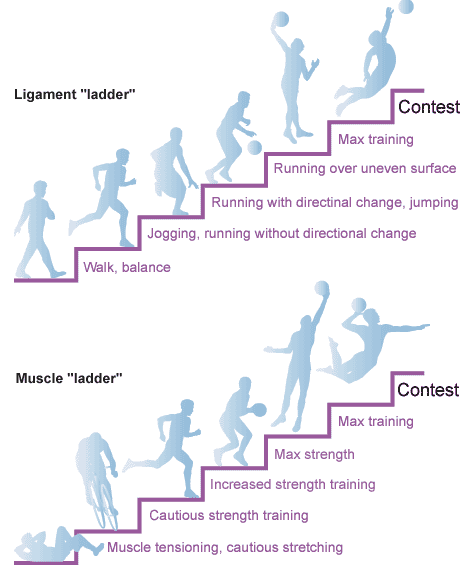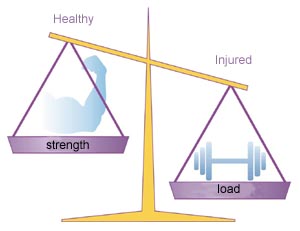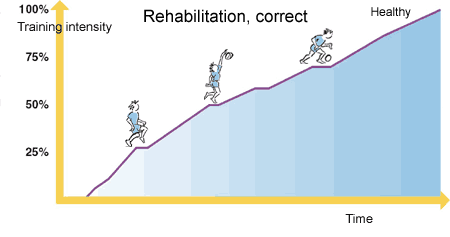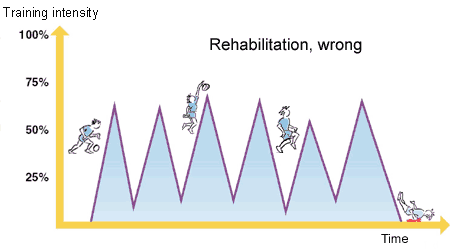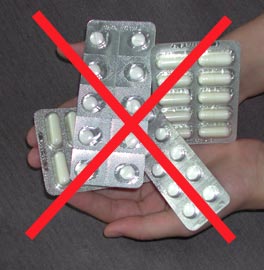GROWTH AND PUBERTAL DEVELOPMENT OF YOUNG FEMALE GYMNASTS AND SWIMMERS: A CORRELATION WITH PARENTAL DATA.
Theintz GE, Howald H, Allemann Y, Sizonenko PC. Int J Sports Med 1989 Apr;10(2):87-91
Whereas intensive and regular physical training is known to alter female reproductive function, its potential role in growth is still controversial. At the beginning of a longitudinal growth study of young elite female gymnasts (n = 34, 15-25 h/wk training) and moderately trained swimmers (n = 19, 5-15 h/wk), patterns of recalled parental growth and pubertal maturation were compared with those of parents of 25 sedentary school girls. These data were also correlated to the height, weight, pubertal development as well as adult height prognosis of their daughters. Bone age was estimated using the methods of Greulich-Pyle and Tanner (RUS score) and adult height prognosis using the methods of Bayley-Pinneau (BP), Roche-Wainer-Thissen (RWT), and Tanner et al. (TW2). Parents of gymnasts were significantly lighter (fathers: P = 0.027; mothers: P = 0.038) and shorter (fathers: P = 0.034; mothers: P less than 0.001) than those of swimmers and controls. Consequently, target heights of gymnasts were also significantly shorter (P less than 0.001). Recalled menarche occurred significantly later (P = 0.030) in mothers of gymnasts who, in turn, grow much alike their mothers. At the first visit, the gymnasts were shorter and lighter for age than swimmers and controls. Their bone age (11.0 +/- 1.3 years, mean +/- SD) was retarded (P less than 0.001) when compared with chronological age (12.6 +/- 1.2 years). Adult height prognosis was lower for gymnasts than for other girls
Kategoriarkiv: General
general4
ANTHROPOMETRIC MEASUREMENTS OF ADOLESCENT AND PROFESSIONAL CLASSICAL BALLET DANCERS.
Clarkson PM, Freedson PS, Skrinar M, Keller B, Carney D. J Sports Med Phys Fitness 1989 Jun;29(2):157-62
This study examined anthropometric measures of 83 female adolescent students attending the Boston Ballet summer program and 15 professional dancers from the Boston Ballet Company. Thirty-one were in the least advanced level (group A), 38 were in the moderately advanced level (group B) and 14 were in the most advanced level (group C). The adolescent dancers devoted between 17 and 23 hours per week in dance training, while professional dancers spent 39.2 hours per week in class and rehearsals. Compared to normative data, the dancers tended to be tall and slim. The skinfold, diameter, and circumference measurements were found to be very similar among groups A, B and C, and between group C and the company members. The somatograms demonstrated that the ballet dancers had relatively smaller upper arms and larger calves and ankles compared with the reference female. The data from this study suggest that the body type characteristics associated with professional classical ballet dancers are already apparent in the pre-professional adolescent dancers.
general3
EVIDENCE FOR A REDUCTION OF GROWTH POTENTIAL IN ADOLESCENT FEMALE GYMNASTS.
Theintz GE, Howald H, Weiss U, Sizonenko PC. J Pediatr 1993 Feb;122(2):306-13
The goal of this prospective study was to assess whether intensive physical training during puberty could alter the growth potential of adolescent female athletes. Height, sitting height, leg length, weight, body fat, and pubertal stage of 22 gymnasts aged 12.3 +/- 0.2 years (mean +/- SEM), with an average training period of 22 hr/wk, and of 21 swimmers aged 12.3 +/- 0.3 years (average training period 8 hr/wk) were recorded half-yearly for a mean period of 2.35 years (range 2.0 to 3.7 years). Adult height predictions were performed with the methods of Bayley and Pinneau; Roche, Wainer, and Thissen, and Tanner et al. Growth velocity of gymnasts was significantly lower than that of swimmers from 11 to 13 years of bone age (p < 0.05), with a mean peak height velocity of 5.48 +/- 0.32 cm/yr versus 8.0 +/- 0.50 cm/yr for swimmers. Height standard deviation score decreased significantly in gymnasts with time (r = -0.747; p < 0.001). This observation was not associated with a significant alteration of chronologic age/bone age ratio. By contrast, height standard deviation score remained unchanged in swimmers (r = -0.165; p = 0.1). A marked stunting of leg-length growth was observed in gymnasts from 12 years of bone age, resulting in a marked difference in overall sitting-height/leg-length ratio (gymnasts 1.054 +/- 0.005 vs swimmers 1.100 +/- 0.005; p < 0.001). Concomitantly, predicted height of gymnasts decreased significantly with time (Tanner et al.: r = 0.63, p < 0.001; Bayley-Pinneau: r = 0.44, p < 0.001), whereas those of swimmers did not change. We conclude that heavy training in gymnastics (> 18 hr/wk), starting before puberty and maintained throughout puberty, can alter growth rate to such an extent that full adult height will not be reached. The mechanisms underlying these observations are not settled; we suggest that prolonged inhibition of the hypothalamic-pituitary-gonadal axis by exercise, together with or because of the metabolic effects of dieting, is responsible for them
general2
ANTHROPOMETRIC, BODY COMPOSITION, AND MATURITY CHARACTERISTICS OF SELECTED SCHOOL-AGE ATHLETES.
Malina RM, Meleski BW, Shoup RF. Pediatr Clin North Am 1982 Dec;29(6):1305-23
Young athletes of both sexes grow as well as nonathletes. The experience of athletic training and competition does not harm the physical growth and development of the youngster. The young, trained athlete has generally a lesser percentage of body weight as fat. Maturity relationships are not consistent across sports. Male athletes more often than not tend to be advanced maturationally compared with nonathletes. On the other hand, female athletes tend to be delayed in maturity, except for swimmers. Maturity-associated variation in size and body composition is thus a significant factor in comparing athletes and nonathletes, especially during the circumpuberal years
general1
THE BIOLOGICAL ASPECTS OF PUBERTY.
Kulin HE, Muller J. Pediatr Rev 1996 Mar;17(3):75-86
No abstract
diagnosis – general
Diagnosis
A precise diagnosis can be made in far the majority of cases from the case history and a clinical examination.
In many cases it will, however, be advantageous to supplement with:
X-ray, which is primarily used for suspicions of fractures, stress fractures and bone membrane tears (avulsion). The examination entails exposure to x-ray irradiation and should be restricted as much as possible in children and adolescents.
CT-scanning, which is used with certain fractures as a supplement to ordinary x-ray examination. The examination entails marked exposure to x-ray irradiation and should be restricted as much as possible in children and adolescents.
MRI-scanning, which is primarily indicated in cases where further examination of the conditions inside the joints is desired – since ultrasound scanning is easier, considerably cheaper and presumed just as effective in evaluating conditions outside of the joints. The examination entails exposure to magnetic irradiation, which is, as far as anyone knows, harmless.
Diagnostic blockade with local anaesthetic has only modest risks associated with it if performed with the correct injection technique (possibly under guidance of ultrasound), and can contribute with considerable diagnostic information.
Arthroscopy, which is used for diagnostic examination of the conditions in the joint if it is not possible to determine “from outside” what is wrong in the joint despite use of all other modern technology. This method is associated with a number of risks in relation to the other examination methods.
Ultrasound scanning, which is the cheapest, quickest and most suitable examination to enhance the findings from a clinical examination. The examination entails exposure to ultrasound irradiation which is completely harmless and is therefore very suitable for children and adolescents.
Ultrasound scanning has developed rapidly over the recent decades. Ultrasound scanning is today an integral part of the clinical examination associated with sports medicine and other rheumatology related conditions, and acts as the physician’s “extended hand”.
Ultrasound scanning will generally contribute to clarifying matters where the diagnosis is not certain, or the course of events is not as could be expected. Ultrasound scanning is particularly suitable for revealing the structures outside, and within the joints. The examination allows evaluation of the muscles, tendons and joints when activated (dynamic ultrasound scanning) (Ultrasonic image) as well as ultrasound-guided diagnostic and therapeutic draining of accumulations (blood, joint fluid, etc.). Furthermore, ultrasound-guided injection provides the possibility of placing the needle within a range of precision of 1/10 mm (article), (Ultrasonic image).
Examples where ultrasound scanning has enabled precise diagnosis and treatment:
Case history 1: Stress fracture , (Ultrasonic image)
Case history 2: Meniscus lesion, (Ultrasonic image)
Case history 3: Muscular attachment with bone tear , (Ultrasonic image)
Case history 4: Inflammation of the tendon sheath (tenosynovitis, (Ultrasonic image)
Training of children – general
TRAINING OF CHILDREN AND ADOLESCENTS IN GENERAL
| There is an increasing tendency for young athletes to take part in intensive training programs and challenging competition sport – all putting great demands on the body’s physique. In this connection, it is very important that the trainer (and parents) set up realistic goals and limitations so that the youngster’s natural physical and psychological development is not affected in a negative way.
A child’s ability to train is altered dramatically when reaching puberty, and is predominantly hormone conditional. The child’s natural stages of development must be respected, and it is important to be constantly aware of symptoms from the body that may indicate that the limit of the child’s performance has been overstepped. It is more important to find the right balance between the load and stress the body is subjected to, in relation to the strength of the body’s structures (muscles, tendons, bones), and all training must be performed within the pain threshold (tenderness, swelling, reduced ability). It is therefore necessary to reduce the intensity of the training if pain is experienced during training, or in the evening or day following the training. It is similarly important that the training is gradually stepped up without large jumps in the intensity of the training, to enable the body to adjust to the new load. |
||||||||||||||||||||||||||||||||||||||||||
|
|
Rehabilation of children – general
|
The knowledge we have today does not present a clear-cut picture of the connection between the occurrence of injuries in relation to training intensity, bodily stature and the development of puberty. As with adults, sports injuries in young athletes occur when the tissue is subjected to a load that exceeds the strength of the tissue
It is therefore vital that the warning signals that the body sends out (pain, tenderness, reduced ability, swelling) are treated with the proper respect. Over-load injuries in young athletes are often centred on the bone growth zone (apophysis), as well as the muscle and tendon attachments. Over-load injuries are especially seen during the period of rapid growth at the beginning of puberty. The acute injuries primarily comprise fractures, stress fractures, tears, dislocations and ligament injuries. It is especially important for children and adolescents to be medically examined at the slightest sign of injury, unless of course the injury is very commonplace or trivial. The fact that many longer-term illnesses often present themselves in children for the first time in connection with performing sports and games must also be taken into consideration. This can, for example, include forms of arthritis or other medicinal conditions that involve the “moving parts”. Infections or cysts in the muscles or bones are often first seen showing discreet symptoms whilst doing sport. Although these conditions are relatively rare, it is naturally vital for the treatment’s result that the conditions are diagnosed as early as possible so that the correct treatment can be started. It is of utmost importance that all rehabilitation for children and adolescents is performed within the pain threshold. Young athletes are very often not good at registering and reacting to the body’s warning signals and adjusting rehabilitation to follow these signals (tenderness, swelling, reduced ability), which will entail a higher risk of the rehabilitation following a “saw tooth” pattern with alternating progress and relapse, instead of a steady but slower progress. This is the classic sign that the warning signals are not observed and respected, and that the rehabilitation is being forced quicker than the injured tissue can manage.
The social aspect associated with playing sport is of great importance for many children. It is therefore very important that rehabilitation exercises take place at the same time, and together with, the training of the team-mates who are not injured. It is always possible to prepare some rehabilitation exercises in one form or another which makes this achievable. It is therefore not optimal that “rehabilitation” consists of a total break from sport at home until the pain has gone before contacting the club to take part in normal training once again. All rehabilitation should therefore take place at the same location as the training for the team-mates that are not injured, and of course to the extent possible, the injured children should participate with the others in the normal training (i.e. warming up, light technical exercises, etc.). When the “normal” training involves exercises that the injured team mate can not take part in at the actual stage of his rehabilitation, the person injured can perform some special exercises, but in the same area as the others. The majority of sports injuries in children and adolescents can be treated with short-term relief, whilst other injuries will require a simple rehabilitation programme that can be found and downloaded from the children’s section of www.sportnetdoc.com. These exercises can in many cases be made more specific to the actual sport, and be amended so that they can be performed at the same place and at the same time as the non-injured team-mates. Some more serious injuries in children and adolescents will demand a more detailed and specialised rehabilitation program, which to a large extent can be found and downloaded from the adult section of www.sportnetdoc.com. It is important to point out that a standard rehabilitation program cannot be a substitute for a specific medical evaluation of the injury, and specific instruction. |
Medicinal Treatment – child
| MEDICINAL TREATMENT |
|
The overriding treatment of children with sports injuries is as given under Rehabilitation of children and adolescents in general “active rest” with increasing load within the pain threshold. In general, medicinal treatment of sports injuries in children is by and large never warranted. Almost all forms of medicinal treatment have a pain reducing effect which will allow the athlete to continue the (over)load, and thereby entail an increased risk of aggravating the injury if the athlete is not controlled very closely. It is only in a very few cases that medicinal treatment is warranted, and in these rare cases, the treatment must be prescribed by a physician. If further information is desired on medicinal treatment of sports injuries in adults, please refer to SportNetDoc’s section on Medicinal treatment in general of adult athletes.
|
Childrens physical development in general
CHILDRENS PHYSICAL DEVELOPMENT IN GENERAL
Children are not small adults from a sports viewpoint!
Knowledge of childrens’ growth and development during puberty is therefore of vital importance when training programs are prepared. The risk of injury must be evaluated, and preventive measures planned. Boys’ and girls’ growth patterns are on the whole identical until puberty in the 9-14 age group. Puberty begins for girls approximately 1-2 years before boys. The secondary sexual characters for girls begin to manifest themselves around the age of 11, whereas for boys it is around the age of 12. At this time, the fat content of the girls’ body increases, whereas the boys’ growth is predominantly fat-free, and primarily occurs in the bones and muscles (article-1) (article-2). The average age in Denmark for a girl’s first menstrual period is 13.4 years, and from this point they will grow on average 8 cms in height.
During the period of growth the body is especially sensitive and can be influenced by a number of factors, for example in the form of physical exercise and diet. If, for example, children and adolescents during the period of growth use more energy (calories) than is obtained from their diet, they will be in a negative energy-balance which can amongst other things result in reduced height development.
It is therefore vitally important that children and adolescents taking part in sport have a diet that contains sufficient quantities of energy, vitamins and minerals (amongst others calcium). All these requirements are fulfilled from a normal and varied diet, and it is therefore incorrect to believe that taking part in sport demands a special diet for children and adolescents. Diet supplements for healthy children and adolescents are therefore never warranted, and must be strongly advised against.
The mineral content, density and strength of the bones increases during the period of growth, and reaches the maximum in the early twenties. The calcium content of the bones is thereafter gradually reduced throughout the rest of the life. The higher the calcium content is at the age of 20, the lesser the risk of developing brittleness of bones (osteoporosis) later in life. A normal and varied diet, as well as regular exercise, increases the calcium content of bones.
Earlier tests of young female gymnasts have shown that intensive physical training can result in a delayed pubertal development, increased occurrences of menstrual disturbance, delayed bone maturity, reduced mineral content later in life and reduced height, weight and fat percent in relation to age (article-3). However, other tests have been unable to reveal any harmful effects even after lengthy and intensive training during the period of growth (article-4) (article-5).
Children and adolescents develop the enzyme systems that are necessary to improve the anaerobic capacity (intermittent sprint training, anerobic training) quite late. These forms of training for children are therefore pointless.
It can generally be concluded that the physical development of children and adolescents is primarily conditional upon genetics and hormones, and that physical exercise and a diet of normal good quality are the principal ingredients in this natural development. An analysis of the diet and training activity should be included in the primary medical examination in cases of growth or menstrual disturbance in children and adolescents.

